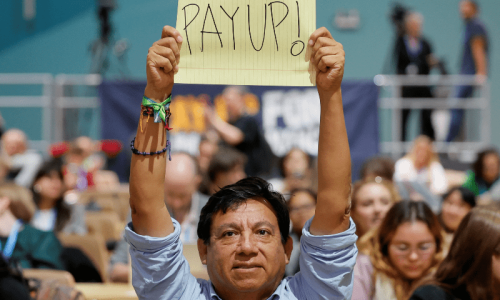
PAKPATTAN: His gaze fixed on a portion of the narrow dirt track winding through lush green maize fields, the white-bearded septuagenarian examines the ground with the keenness of an archaeologist. Sitting on his haunches, Sultan Mohla — the area khoji (tracer of footprints) — looks around; his apprentice, knowing exactly what he needs, hands him a straw. Sultan draws a circle around the area of his interest and then, with the straw, measures the footprint showing there. Then he compares it with the width of his fingers pressed together. Getting up, he moves to another spot a few yards ahead to repeat the process. The straw and his fingers are the only two ‘gadgets’ he employs.
Behind him, following at a respectful distance, is a small crowd comprising some elderly men, idle youths and half-clad children. No one talks loudly; everyone is keenly observing the professional and his technique. How the old man remembers the details he gleans of a footprint or a hoofprint, without even paper and pen, is a mystery.
Sultan explains: “Once a good khoji sees a khura [footprint or hoofprint], he memorises everything about it and recognises it immediately on second encounter.”
His services have been called for by a resident of Dariya Ding, a small village in Arifwala tehsil situated off the road that links Sahiwal and Bahawalnagar. The man claims that the previous night someone sneaked into his cattle pen and then quickly vanished into the darkness of the moonless night.
This story records Sultan’s last assignment. He died recently after helping police and victims of theft in hundreds of cases. Theft, or even an attempt at it, is taken very seriously in these closely-knit rural communities, not only for the material loss it inflicts, but also because the crime or trespass marks the victim as weak and vulnerable, exposing him to more harm in a culture where ‘might is right’ is not just a phrase.
Sultan had no idea of his year of birth. His age, like of many others of his pre-birth certificate generation, could only be determined by knowing how old he was when landmark events occurred.
“I was his age at the time of wund [Partition],” he said, pointing to a lad of around ten years. One of the last few in a profession that is dying rapidly because of the introduction of modern forensic techniques and technologies, Sultan worked in better times as an expert khoji. “We used to be the first to be called to the crime scene,” he mused. “I would be there even before the police sometimes.”
He explained that there used to be greater awareness about preserving evidence. Following a theft or a trespass, people would cover the khura with a tokra (large basket made from branches of mulberry tree), or a charpoy.
Asked why he chose this profession, he smiled. “As a young man, I once found myself in the company of some cattle thieves. I was simply fascinated by the adventure and apparent freedom their ‘work’ brought, as compared to the labour my father put into his fields. So I joined them,” he explained.
He added that amongst many of the local tribes, stealing some livestock used to be taken as a sign that a boy had become a man.
“But thieves had their own code in those days,” he continued. “They were prohibited from committing any immoral act, including looking at the women in the house they were targeting. No looting of ornaments was permitted if it was part of the dowry of a girl soon to be married. The thieves wouldn’t touch money placed in the pages of the Holy Quran. As for me, though, after a couple of trips with the gang, my father got wind of my activities and gave me a good thrashing.”
But during that short stint, Sultan had learned the tricks thieves would employ to cheat the police and the khoji. The khura provides a lot of information about the person, he added — gender, gait, weight, age, etc. “When asked to parade before a khoji, many thieves would try to alter their gait,” he said. “But an experienced khoji immediately notices the trick because he knows the purpose.”
Raja Ishfaq, a police inspector who has served mostly in rural areas after joining the force as a beat officer (assistant sub-inspector) more than two decades ago, explains the role of the khoji. He says that the khoji was called in usually by the victim. “When he started following the trail of footprints, he was accompanied by the vaahr — a group ideally comprising some locals with good reputation, the victim, and sometimes a policeman to verify the authenticity of the probe,” he says.
Once the khoji memorised the specifications of a footprint, the suspects were made to walk on powdery soil; if the footprint of any of them matched with those found on the crime scene, the suspect was further interrogated by police. According to Raja Ishfaq, police recorded the khoji’s statement under Section 161 of the Criminal Procedures Code (CrPc) and made it part of the case record.
“If they (khojis) do their work professionally and without any fear or favour, they prove very helpful in tracing criminals,” muses Ishfaq. “But like many professions, this one too has honest and not-so-honest professionals.”
Published in Dawn, February 24th, 2017














































